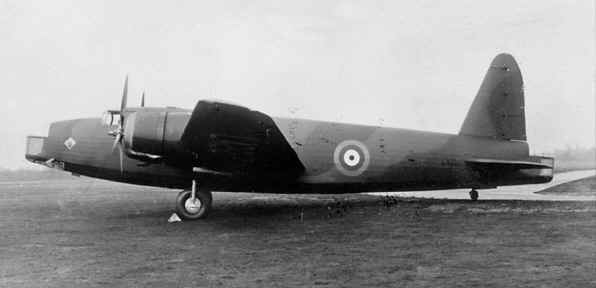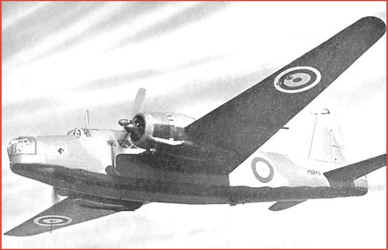| The Vickers Wellington,
affectionately known as the "Wimpy," was armed with twin .330
machine guns in the nose and tail turrets. It also had 2
manually-operated .303 guns in the beam positions and could carry a
4,500 lb bomb load. Slow speed, limited ceiling, and a small bomb load
soon made the Wellington obsolete, although one significant design
advantage was Barnes-Wallace's geodetic lattice-work fuselage
construction. This made the Wimpy extremely tough, and it often survived
battle damage which would have destroyed other aircraft.

"The Flying Cigar" was an occasional
nickname for the Vickers Wellington Bomber, more commonly known as the
"Wimpy". The term "Flying Cigar" alludes to the
shape of the fuselage as seen from the profile perspective.

After having early-on proved the inadequacy of
the turret fire-power in fending off attacking fighters during daylight
attacks, the Wellington went on to build up a great reputation for
reliability and ruggedness in night bombing operations. In April 1941,
they were the first to drop the deadly "block-buster" bomb,
during a raid on Emden, and they helped to initiate the Pathfinder
target-indicating tactics. In service, the Wellington was known as
"The Wimpy", after J. Wellington Wimpy, Popeye's friend.
(cartoon characters) |